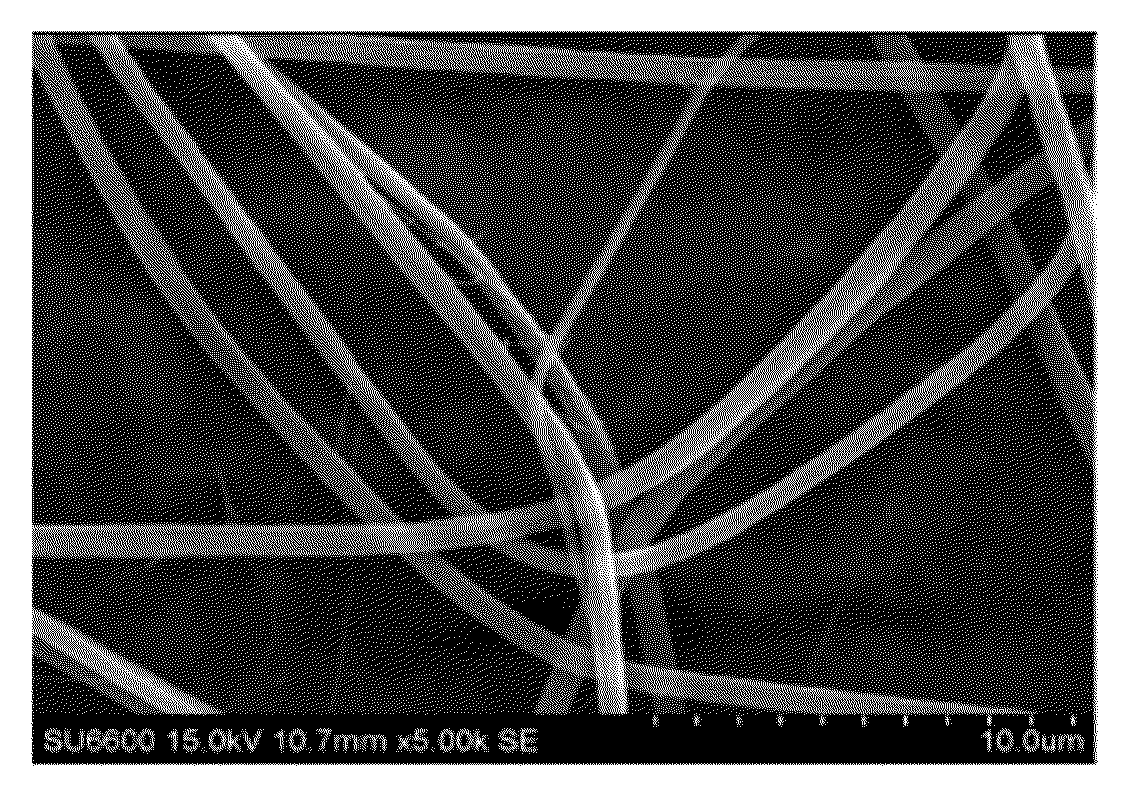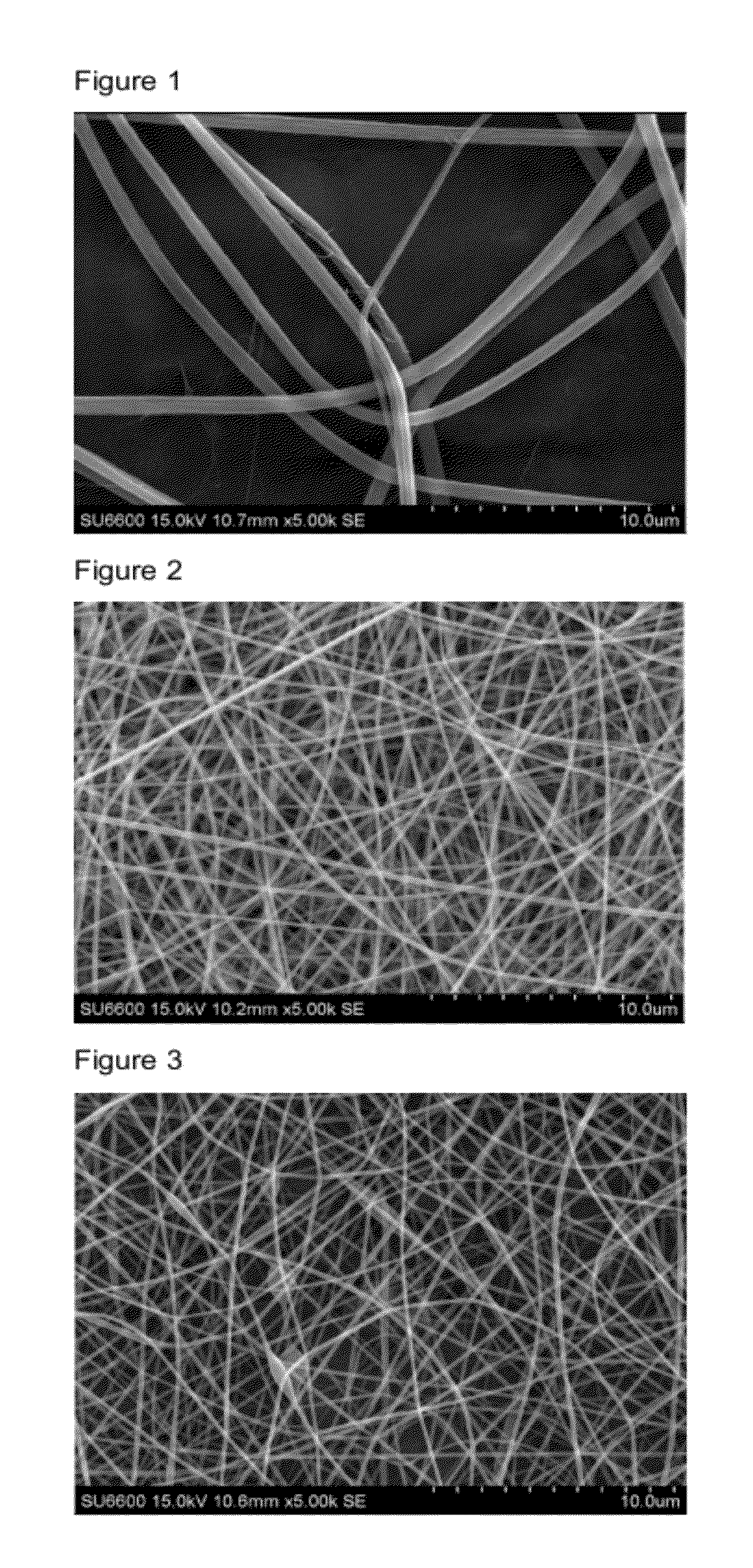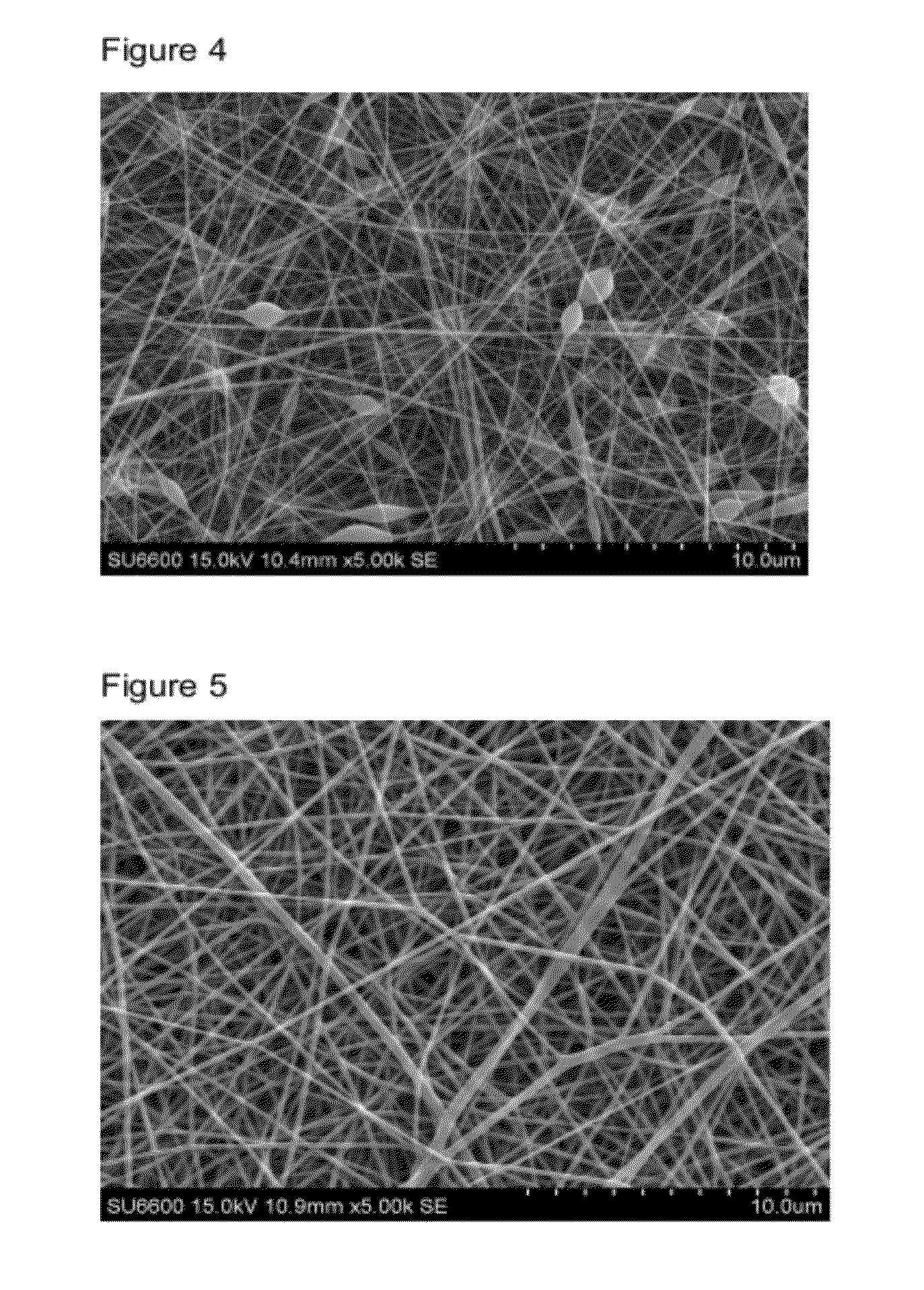Fiber Comprising Heat Curable Polyamide Resin Composition, Nonwoven Fabric And Producing Method Thereof
a technology of heat-curable polyamide and resin composition, which is applied in the direction of mono-component polyamide artificial filament, filament/thread forming, textiles and paper, etc. it can solve the problems of avoiding their use, unsuitable for cushioning materials, adverse effects on human bodies and the environment, etc., and achieve excellent chemical resistance and mechanical strength.
- Summary
- Abstract
- Description
- Claims
- Application Information
AI Technical Summary
Benefits of technology
Problems solved by technology
Method used
Image
Examples
synthesis example 1
[0064]To a flask equipped with a thermometer, a cooling tube and a stirrer, which is purged with nitrogen gas, 1.8 g of 5-hydroxyisophthalic acid, 81.3 g of isophthalic acid, 102 g of 3,4′-diaminodiphenyl ether, 3.4 g of lithium chloride, 344 g of N-methylpyrrolidone and 115.7 g of pyridine were added and dissolved by stirring followed by addition of 251 g of triphenyl phosphite, and the mixture was reacted at 90° C. for 8 hours. As a result, a reaction liquid containing a) a phenolic hydroxy group-containing polyamide resin represented by the following formula (6):
was obtained. This reaction liquid was cooled to room temperature and then put into 500 g of methanol to precipitate a resin, which is filtered and washed with 500 g of methanol and then further purified under reflux of methanol. Subsequently, the mixture was cooled to room temperature followed by filtration, and the filtrate was dried to obtain a resin powder. The obtained amount is 160 g and the yield is 96%.
[0065]In th...
examples 1 to 4
[0067]The polyamide resin obtained in Synthesis Example 1, epoxy resin NC-3000 (manufactured by Nippon Kayaku Co., Ltd., epoxy equivalent: 275 g / eq, softening point: 58° C., and average repeating number m of a segment in the formula (5): about 2.5) represented by the above formula (5) as an epoxy resin, GPH-65 (manufactured by Nippon Kayaku Co., Ltd., hydroxy group equivalent: 170 g / eq, and softening point: 65° C.) as a curing agent, 2-methylimidazole (2MZ) as a curing accelerator and N,N-dimethylformamide (DMF) as a solvent were mixed in the parts by mass shown in the table 1 to prepare a solution (spinning solution) of a heat curable polyamide resin composition for fiber of the present invention. The obtained resin composition was filled into a syringe with a metal needle having an internal diameter of 0.35 mm, and an aluminum foil substrate was set on a 100 mm sq. SUS plate (collector) at 200 mm directly below the needle tip. After that, the voltage shown in the table 1 was appli...
example 5
[0068]A deposit of the heat curable polyamide resin composition nanofiber obtained in the example 2 was subjected to heat treatment at 200° C. for 1 hour to obtain a nonwoven fabric of the present invention. The obtained nonwoven fabric was immersed in N,N-dimethylformamide for 30 minutes to confirm that it was insoluble (FIG. 5).
PUM
| Property | Measurement | Unit |
|---|---|---|
| diameter | aaaaa | aaaaa |
| temperature | aaaaa | aaaaa |
| temperature | aaaaa | aaaaa |
Abstract
Description
Claims
Application Information
 Login to View More
Login to View More - R&D
- Intellectual Property
- Life Sciences
- Materials
- Tech Scout
- Unparalleled Data Quality
- Higher Quality Content
- 60% Fewer Hallucinations
Browse by: Latest US Patents, China's latest patents, Technical Efficacy Thesaurus, Application Domain, Technology Topic, Popular Technical Reports.
© 2025 PatSnap. All rights reserved.Legal|Privacy policy|Modern Slavery Act Transparency Statement|Sitemap|About US| Contact US: help@patsnap.com



